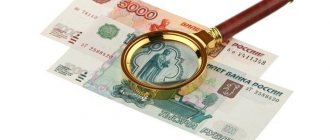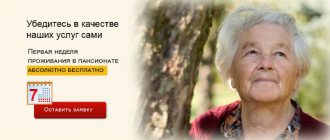Types of pension payments in the Russian Federation
Russian pensioners do not belong to the poor, that is, to those who live below the poverty line. But at the same time, government payments for the vast majority will barely be able to cover all the needs of older citizens. The average pension for Russian pensioners, according to Rosstat, is 14.9 thousand rubles. According to the legislation of the Russian Federation, in order to be assigned the status of a low-income person, income must be less than the subsistence minimum (ML), and when calculating pensions it is always taken into account. And if the final payment does not reach the local PM level, then the pensioner is paid the missing amount.
There are 4 types of pension payments in Russia:
- Insurance . Previously, this type of payment was called a labor pension. They begin to issue it when you reach a certain age and have accumulated the required work experience.
- Social . This type of payment is claimed by different segments of the population under certain life circumstances. It is not related to the citizen’s work activity.
- Savings - formed for those citizens who were born after 1967 and made contributions to special savings funds.
- Non-state - they will be received by those Russians who have entered into an agreement with a non-state pension fund. Citizens independently transfer part of their income to a non-state pension fund under the terms of the agreement, and upon reaching age they receive payments from it.
Each type of pension payment and the rules for receiving them are prescribed in the legislation of the Russian Federation. You can find out about your right to a pension at the Pension Fund branch or on the Pension Fund website in your personal account.
Any type of pension can be transferred to a card.
Choose the most profitable card for a pensioner →
When it comes to pensions, in most cases they mean old-age payments, because this category of Russian pensioners is the largest.
| Category | 2019 |
| All pensioners in the Russian Federation | 43 865 000 |
| By old age | 36 710 000 |
| By disability | 2 043 000 |
| Survivors | 1 403 000 |
| Victims of man-made disasters and radiation | 443 000 |
| Federal civil servants | 77 000 |
| Test pilots | 1000 |
| Social pensioners | 3 188 000 |
The pension reform launched in Russia in 2021 also applies to old-age pensioners. The amount of this type of payment directly depends on the length of service and the region of residence of the pensioner.
Accrual conditions
State legislation establishes that the amount of pension payments directly depends on the availability of insurance coverage, its duration and the amount of official earnings from which the employer makes regular contributions to the Pension Fund of the Russian Federation.
According to the adopted bills, every year, until 2025, the requirements for citizens who are going for a well-deserved retirement in old age will increase.
The procedure for changing requirements is shown in the table below.
| Year of retirement | Required insurance experience (years) | Minimum IPC amount to qualify for an insurance pension | Limit value of annual IPC | |
| With a funded pension tariff of 0% | With a funded pension tariff of 6% | |||
| 2015 | 6 | 6.6 | 7.39 | 4.62 |
| 2016 | 7 | 9 | 7.83 | 4.89 |
| 2017 | 8 | 11.4 | 8.26 | 5.16 |
| 2018 | 9 | 13.8 | 8.7 | 5.43 |
| 2019 | 10 | 16.2 | 9.13 | 5.71 |
| 2020 | 11 | 18.6 | 9.57 | 5.98 |
| 2021 | 12 | 21 | 10 | 6.25 |
| 2022 | 13 | 23.4 | 10 | 6.25 |
| 2023 | 14 | 25.8 | 10 | 6.25 |
| 2024 | 15 | 28.2 | 10 | 6.25 |
| 2025 | 15 | 30 | 10 | 6.25 |
The introduction of a gradual increase will encourage citizens to work more in order to obtain a sufficient amount of insurance coverage and an individual pension coefficient (IPC) to receive a pension.
When calculating old-age benefits, only officially registered income is taken into account.
Prerequisites for increasing pensions in the Russian Federation
The most significant indexation of old-age pensions was carried out in the Russian Federation in 2015. Then payments were increased by 11.4%. In subsequent years, there were no such significant recalculations, and pensions grew at a pace that sometimes even lagged behind the inflation recorded in the country:
- In 2016, indexation of pensions for working pensioners was stopped;
- In 2017, indexation of pensions takes place twice - in February the fixed part of the pension was indexed by 5.8%, in April the insurance part for all pensioners, including working ones, was indexed by 0.38%.
- 2018 indexation of pensions for non-working pensioners by 3.7% - the minimum coefficient over the past few years;
- 2019 – indexation by 7.05%, the maximum figure since 2015, which turned out to be 2 times higher than the inflation rate.
In 2021, pension increases will be felt by several categories of Russian pensioners:
- In August 2021, pensions will be indexed for those pensioners who continue to work. For more information on how this premium is calculated, see a separate article by Brobank.
- The indexation of pensions for non-working pensioners from January 1, 2021 amounted to 6.6%. On average across the country, payments for this category of citizens increased by 1,000 rubles. Find out how to calculate your premium here.
- Social pensions have been indexed by 6.1% since March 2021. Which is three times higher than the coefficients that were used in the previous two years, and 2 times higher than the inflation rate recorded in the Russian Federation in 2019.
- The budget also takes into account an increase in the fixed part of pensions by 25% for workers in rural areas whose work experience in agriculture is more than 30 years. The approved list of professions eligible for increased pensions includes more than 500 items.
- From October 2021, pensions for retired military pensioners will be increased by 3%. They index one-time payments, monthly compensations and insurance amounts for the military and security forces.
A pension reform has been launched in 2021, according to which citizens are promised an annual increase in old-age pensions by a percentage higher than inflation. Payments will increase by an average of 1,000 rubles each year.
Retirement age
Considering the entire historical spectrum of pension development, it is worth noting that this payment appeared in the USSR in 1928 and was first introduced for workers in the textile industry. It was from this period that the first figures regarding retirement age were established, which amounted to:
- For men 60 years old.
- For a woman 55 years old.
Further, in 1932, this right also extended to other types of workers and collective farmers. But for agricultural workers, different time frames were established:
- For men 65 years old.
- For women – 60.
Later, from 1968, they began to retire, like other workers.
In modern Russia, the first conversations about the need to raise the retirement age began back in 1997. The initiative came from the Ministry of Economy. In 2010, these conversations and discussions became regular. And so, on January 1, 2021, a law concerning increasing the retirement age for all officials came into force. In accordance with it, the age limit was set:
- For men at around 65 years of age.
- For women - 63 years.
And in 2021, this increase affected all categories of workers. Now men will retire at 65, and women at 60.
The only thing you need to pay attention to is the stages of introduction. For example:
- Men born in 1958 retire at age 60.
- But someone born in 1959 will go on vacation only at 61.
- Those born in 1960 will only be able to take a break from work at the age of 62.
The same phasing exists for women. And to find out exactly when you can get ready not to work, you can use a special sign.
What else do Russians’ pensions depend on?
For the first quarter of 2021, the average pension for Russians was 14,924 rubles. Moreover, in 2021 it was equal to 14,163 rubles. But the given amount is not very informative. For qualitative and quantitative assessments, data should be taken over several years.
| Year | The average pension in the Russian Federation in rubles |
| 2001 | 823,4 |
| 2010 | 6177,4 |
| 2012 | 8272,7 |
| 2013 | 9153,6 |
| 2014 | 10 029,7 |
| 2015 | 10 888,7 |
| 2016 | 12 080,9 |
| 2017 | 12 426 |
| 2018 | 13 323 |
| 2019 | 14 102 |
The smallest increase in pensions was recorded in 2021. Indexation in 2021 was carried out not by the actual rate of inflation, recorded in 2015 at 12.9%, but by only 4 percent. As a result, pensioners lost a significant part of their income and even one-time payments of 5,000 rubles could not compensate for them. In 2021, indexation was also canceled for all working pensioners, which also affected the level of the average pension in the country.
The average pension in Russia depends on the gender, place of residence and category of the pensioner:
| Category | In 2021, in Russian rubles |
| Men | 13 950 |
| Women | 14 407 |
| Villager | 12 687 |
| City pensioners | 14 601 |
| Average pensions for disabled people | 9279 |
| For the loss of a breadwinner | 9479 |
| Social pensions | 9094 |
| Pension payments to former officials | 19 994 |
From the above data it is clear that male pensioners receive an average of 0.5 thousand rubles. more women, and rural residents by 2 thousand rubles. less urban. Social pensions are closest to the subsistence level.
Statistics on the average size of pensions are not informative enough. Therefore, Rosstat compares them with purchasing power in relation to the level of the previous year.
| Year | The size of the real pension compared to the previous year, in percent |
| 2012 | 104,6 |
| 2013 | 103,3 |
| 2014 | 103,3 |
| 2015 | 97,5 |
| 2016 | 101,1 |
| 2017 | 97,9 |
| 2018 | 104,9 |
| 2019 | 101,5 |
| I quarter 2020 | 103,2 |
The table shows that in 2015 and 2021, pensioners were at the greatest disadvantage. During these years, they were able to buy fewer goods with their pensions than in the previous years of 2014 and 2021. In all other periods, the dynamics remained positive.
How many WWII veterans are alive in Russia?
As of January 1, 2021, there are 134,735 registered Great Patriotic War Veterans in Russia who receive monthly cash payments.
These include participants of the Second World War, including:
- persons who did not serve in military service outside the active army (58,777);
- persons who served in military service outside the active army (1992);
- persons awarded the badge “Resident of besieged Leningrad” (73888);
- persons working at defensive facilities and crew members of transport fleet vessels (78).
The table below shows how the number of participants in the Great Patriotic War has changed since 2013:
| Year | Total number of WWII veterans, people. |
| 2013 | 245014 |
| 2014 | 226366 |
| 2015 | 210366 |
| 2016 | 194767 |
| 2017 | 178817 |
| 2018 | 163510 |
| 2019 | 149280 |
| 2020 | 134735 |
The largest number of WWII veterans live in the United States of America - almost 430 thousand people.
The ratio of pensions in the region and regional PM
The difference in the size of pensions of Russians depending on the territory of residence is indicative. According to Rosstat, average pensions in certain regions of the country differ by 2-2.5 times. For objectivity of the amounts, we present them in comparison with the subsistence level established in the region. The sample shows data with the lowest and highest indicators for 2021 in Russian rubles:
| Region | Average pension in the region | Living wage for a pensioner in the region of residence | Difference between PM and average pension |
| For the Russian Federation as a whole | 14 102,1 | 8846 | 5256,1 |
| Chuvash Republic | 13 038,4 | 7953 | 5085,4 |
| Tambov Region | 12 632,8 | 7811 | 4821,8 |
| Belgorod region | 13 842,2 | 8016 | 5826,2 |
| Moscow region | 15 124,4 | 9908 | 5216,4 |
| Moscow | 15 204,2 | 12 115 | 3089,2 |
| Nenets Autonomous Okrug | 21 660,5 | 17 956 | 3704,5 |
| Yakutia | 18 900,7 | 13 951 | 4949,7 |
| Kamchatka Krai | 21 229,4 | 16 543 | 4686,4 |
| Chukotka Autonomous Okrug | 24 290,7 | 19 000 | 5290,7 |
| Leningrad region | 14 468,1 | 8846 | 5622,1 |
| Saint Petersburg | 15 616,5 | 8846 | 6770,5 |
The table shows that a high pension, for example in the Nenets Autonomous Okrug, after expenses for the cost of living, is less than in the Tambov region, where pensions are the lowest.
According to Rosstat indicators, the average pension in the Russian Federation differs slightly from the minimum in the region. The Russian statistical service recorded that 13.8% of Russian pensioners receive social supplements because their payments do not reach the minimum wage in their region of residence.
Russian regions with the lowest pension levels in 2019:
- Volga Federal District - 13,523 rubles;
- Southern Federal District – 12,940 rubles;
- North Caucasus Federal District - 11,927.1 rubles;
- Republic of Buryatia – 13,185.3 rubles;
- Trans-Baikal Territory – 13,119.1 rubles.
The highest pensions in 2021 were in the Far East - 15,629.7 rubles, Ural - 15,299.5 rubles. and North-West 15,703.1 rubles. districts And also in the Far North and equivalent areas, which is due to more difficult living conditions.
Additional payment up to the subsistence level for pensioners in 2021
Due to the approval of new values of regional subsistence minimums, pensioners in some regions will have to re-register their social supplement to PMP. As described earlier, the type of surcharge (regional or federal) is determined depending on the ratio of regional and federal primary care. If this ratio changes in 2021, that is, the type of additional payment assigned in the region changes, the pensioner will need to submit an application for a new additional payment.
Let's give an example.
- In 2021, the PMP in the Russian Federation as a whole was 8,846 rubles, and in the Smolensk region - 8,825 rubles. That is, Smolensk low-income pensioners received federal additional payments paid by the Pension Fund.
- In 2021, the federal PMP will be 9,311 rubles, and in Smolensk - 9,460 rubles. That is, the regional PMP will be higher than the all-Russian one, which means they will pay a regional supplement. For this reason, the Pension Fund will cancel the FSD, and the pensioner will need to apply to social security for a regional supplement (RSD).
The situation is similar with pensioners in the Amur, Vologda, Irkutsk, Kaliningrad, Novgorod, Novosibirsk, Pskov, Smolensk, Tomsk regions, Karelia, the Kabardino-Balkarian Republic and the Trans-Baikal Territory.
Average pension in Moscow
The capital of the Russian Federation is often perceived as a separate “country”, and many pensioners believe that the conditions there are the most favorable compared to other regions. In reality, two values have been established for Moscow pensioners, from which they base their pension payments:
- the cost of living for a Moscow pensioner is 12,115 rubles;
- city social standard - 19,500 rubles.
But not all Moscow pensioners receive additional payment to the State Social Insurance Fund, but only those who have lived in the capital for more than 10 years. However, even this restriction still has an impact on the final average level of pensions for capital pensioners, which is slightly higher than in the country as a whole.
| Year | Average pension in Moscow, rub. | Average pension in Russia, rub. |
| 2012 | 8893 | 8273 |
| 2013 | 9845 | 9154 |
| 2014 | 10 851 | 10 030 |
| 2015 | 11 790 | 10 889 |
| 2016 | 13 095 | 12 081 |
| 2017 | 13 450 | 12 426 |
| 2018 | 14 410 | 13 323 |
| 2019 | 15 204 | 14 102 |
On average, the difference between payments to a Moscow pensioner is 1,000 rubles higher than for other Russians. However, the price level in Moscow is also metropolitan, so local authorities partly compensate for expensive accommodation with other benefits for pensioners.
Minimum pension in Russia in 2021: table by region
The minimum subsistence level for a pensioner in the Russian Federation as a whole, as of 01/01/2020, is 9,311 rubles per month.
In Moscow in 2021, it was 17,500 rubles for unemployed elderly people who have lived in the capital for at least 10 years (taking into account the application of the Moscow city standard). For other Moscow pensioners, the minimum wage is calculated at the regional level and last year was 12,115 rubles per month.
As of 01/01/2020, a new minimum living wage for a pensioner in Moscow has been established - 12,578 rubles.
The largest pensions are for pensioners living in the Chukotka and Nenets Autonomous Okrugs (19,000 and 17,956 rubles, respectively), in Kamchatka (16,543 rubles) and in the Magadan region (15,460 rubles), which is due to the high cost of food in these regions.
The northern capital cannot keep up with Moscow and Chukotka - the minimum pension in St. Petersburg is equal to the Russian average and in 2021 is 9,311 rubles. According to PFR forecasts, in 2021 it was planned to increase its size to 9,476 rubles, but this did not happen.
Full list of regions with the cost of living for a pensioner:
| Region | Whole population | Pensioners |
| Altai region | 10 050 | 8681 |
| Amur region | 12 235 | 9936 |
| Arhangelsk region | 14 107 | 12 712 |
| Astrakhan region | 10 437 | 8724 |
| Belgorod region | 9236 | 7664 |
| Bryansk region | 10 615 | 8823 |
| Vladimir region | 10 485 | 8827 |
| Volgograd region | 9566 | 7787 |
| Vologda Region | 11 091 | 9227 |
| Voronezh region | 9390 | 7897 |
| Jewish Autonomous Region | 15 344,38 | 14 956,35 |
| Transbaikal region | 12 473, 32 | 9984,22 |
| Ivanovo region | 10 345 | 8674 |
| Irkutsk region | 11 567 | 9365 |
| Kabardino-Balkarian Republic | 12 431 | 9565 |
| Kaliningrad region | 11 392 | 9361 |
| Kaluga region | 11 117 | 9216 |
| Kamchatka Krai | 20 652 | 16 405 |
| Karachay-Cherkess Republic | 9936 | 8002 |
| Kemerovo region | 10 339 | 8337 |
| Kirov region | 10 330 | 8453 |
| Kostroma region | 10 624 | 8901 |
| Krasnodar region | 10 989 | 9080 |
| Krasnoyarsk region | 12 689 | 9942 |
| Kurgan region | 10 222 | 8507 |
| Kursk region | 10 018 | 8327 |
| Leningrad region | 11 028 | 9397 |
| Lipetsk region | 9399 | 7900 |
| Magadan Region | 19 740 | 15 636 |
| Moscow | 17 679 | 12 487 |
| Moscow region | 13 115 | 9848 |
| Murmansk region | 16 886 | 14 040 |
| Nenets Autonomous Okrug | 19 599 | 16 031 |
| Nizhny Novgorod Region | 10 168 | 8389 |
| Novgorod region | 10 447 | 8661 |
| Novosibirsk region | 11 475 | 9247 |
| Omsk region | 10 100 | 8114 |
| Orenburg region | 9585 | 7951 |
| Oryol Region | 10 215 | 8491 |
| Penza region | 9179 | 7629 |
| Perm region | 10 556 | 8703 |
| Primorsky Krai | 13 276 | 10 678 |
| Pskov region | 11 184 | 9251 |
| Republic of Adygea | 9368 | 7681 |
| Altai Republic | 10 190 | 8543 |
| Republic of Bashkortostan | 9992 | 8148 |
| The Republic of Buryatia | 11 631 | 9190 |
| The Republic of Dagestan | 10 043 | 7956 |
| The Republic of Ingushetia | 9884 | 7769 |
| Republic of Kalmykia | 9919 | 7949 |
| Republic of Karelia | 13 795 | 11 545 |
| Komi Republic | 13 791 | 11 366 |
| Republic of Crimea | 10 509 | 8615 |
| Mari El Republic | 9708 | 7911 |
| The Republic of Mordovia | 9181 | 7592 |
| The Republic of Sakha (Yakutia) | 18 161 | 17 660 |
| Republic of North Ossetia-Alania | 9414 | 7618 |
| Republic of Tatarstan | 9295 | 7604 |
| Tyva Republic | 10 778 | 8536 |
| The Republic of Khakassia | 11 139 | 8957 |
| Rostov region | 10 351 | 8377 |
| Ryazan Oblast | 10 123 | 8416 |
| Samara Region | 10 659 | 8505 |
| Saint Petersburg | 11 465,30 | 9303,80 |
| Saratov region | 9339 | 7742 |
| Sakhalin region | 15 065 | 12 082 |
| Sverdlovsk region | 10 811 | 8835 |
| Sevastopol | 11 538 | 9514 |
| Smolensk region | 10 810 | 9000 |
| Stavropol region | 9250 | 7560 |
| Tambov Region | 9879 | 8450 |
| Tver region | 10 676,68 | 8831,91 |
| Tomsk region | 11 656 | 9403 |
| Tula region | 10 621 | 9131 |
| Tyumen region | 11 447 | 9174 |
| Udmurt republic | 9830 | 8002 |
| Ulyanovsk region | 10 159 | 8340 |
| Khabarovsk region | 14 417 | 11 622 |
| Khanty-Mansiysk Autonomous Okrug - Ugra | 15 376 | 12 625 |
| Chelyabinsk region | 10 276 | 8510 |
| Chechen Republic | 10 998 | 9089 |
| Chuvash Republic | 9285 | 7576 |
| Chukotka Autonomous Okrug | 21 997 | 16 988 |
| Yamalo-Nenets Autonomous Okrug | 16 225 | 12 772 |
| Yaroslavl region | 10 573 | 8611 |
Average pension size by profession
The average pension in Russia also depends on the profession to which a citizen devoted years of his working activity:
- teachers - 10.6 thousand rubles;
- health workers, including paramedical staff – 14.4 thousand;
- miners - 17 thousand;
- police and other justice workers - 18 thousand;
- officials - 80 thousand;
- test pilots - 94.5 thousand;
- judges - 150 thousand rubles.
Pensions for military pensioners depend on length of service and military rank. Approximate rank allowances for military personnel:
- lieutenant - 20 thousand rubles;
- captain - 23.5 thousand;
- major - 25 thousand;
- lieutenant colonel - 31 thousand;
- colonel - 40 thousand;
- general - 50 thousand rubles.
The bonuses are paid not by the Pension Fund of Russia, but by the department in which the military man served.
Number of Russian pensioners
According to Rosstat, the number of Russian pensioners is growing steadily.
| Year | Number of pensioners |
| 1981 | 27 417 000 |
| 1991 | 32 848 000 |
| 2001 | 38 411 000 |
| 2010 | 39 090 000 |
| 2015 | 41 456 000 |
| 2016 | 42 729 000 |
| 2017 | 43 177 000 |
| 2018 | 43 504 000 |
| 2019 | 43 865 000 |
The dynamics of growth in the number of citizens entitled to pension payments puts significant pressure on the country's economy. This trend, along with an increase in life expectancy, became the main prerequisites for the start of pension reform in the Russian Federation.
The legislative framework
All nuances regarding the provision of pensions to the country's population are strictly controlled by current state legislative documents. They determine the categories of citizens who can receive pensions, the amount of payments and the conditions under which they are provided.
The fundamental bills are:
- The Constitution of the Russian Federation - determines the right of every citizen who has reached a certain age to receive state support in the form of a pension payment;
- Federal Law No. 166 - contains data regarding the conditions under which the pension is paid and the procedure for receiving it;
- Federal Law No. 167 - defines all issues regarding compulsory pension insurance for Russian citizens;
- Federal Law No. 27 – records information on how a personal system for recording insurance payments is implemented;
- Federal Law No. 75 determines the procedure for receiving additional pension benefits from non-state funds for citizens who have retired.
Features of pension reform in Russia
Dynamics of average pension payments
For the period 2021 and the first quarter of 2021, the dynamics of the average size of Russian pensions looks like this:
| Period | Average pension in Russia, in rubles | The real amount of pensions compared to the same period of the previous year, in% | Average pensions relative to average salaries, % |
| I quarter 2019 | 14 116 | 100,7 | 32,1 |
| II quarter 2019 | 14 140 | 100,9 | 29,2 |
| I half of 2019 | 14 128 | 100,8 | 30,6 |
| III quarter 2019 | 14 174 | 101,7 | 31,0 |
| IV quarter 2019 | 14 224 | 102,6 | 27,5 |
| For 2021 | 14 163 | 101,5 | 29,8 |
| I quarter 2020 | 14 924 | 103,2 | Unspecified data 32.4 |
The data presented show that the country's pension system is far from perfect and the state continues to search for solutions to improve the lives of pensioners. But the pension reform launched in 2021 is at an early stage, so it is still difficult to assess its effectiveness.
What should be the pension according to the International Convention?
Pensioners not only in the Russian Federation, but also in many other countries consider the level of pensions assigned by the state unacceptable. And actually for good reason. For an objective assessment, Rosstat provides data on pensions in relation to the level of average wages in the Russian Federation. This comparison is more indicative of the standard of living of pensioners.
According to the international Convention, the amount of payments to a pensioner should be equal to 40% of the average salary, but in Russia it fluctuates around 30%. In the Russian Federation, the Convention was ratified in 2021, but it has not yet been possible to bring the size of pensions to the specified level.
| Year | Average pension in Russia, in rubles | Average salary, in rubles | Percentage calculated by Rosstat |
| 2012 | 8272,7 | 26 628,9 | 32,1 |
| 2013 | 9153,6 | 29 792,0 | 30,7 |
| 2014 | 10 029,7 | 32 495,4 | 30,9 |
| 2015 | 10 888,7 | 34 029,5 | 32 |
| 2016 | 12 080,9 | 36 709,2 | 32,9 |
| 2017 | 12 425,6 | 39 167 | 31,7 |
| 2018 | 13 323,1 | 43 724 | 30,5 |
| 2019 | 14 163 | 47 867 | 29,8 |
| I quarter 2021 | 14 924 | 48 377 | 32,4 |
According to Rosstat, in 2021 this figure was the lowest in the last 8 years. Upon retirement, a citizen’s income is immediately reduced by more than three times. Therefore, some Russians do not retire even when they reach the established age. In 2019, 8.574 million old-age pensioners continued to work.
Process of consideration of the bill
A bill to lift the moratorium on indexation of pensions for working pensioners was submitted to the State Duma for consideration on June 5, 2020 . On the same day, it was registered under number No. 968227-7 and sent for consideration to the State Duma Committee on Labor, Social Policy and Veterans Affairs. On June 10, 2021, the State Duma Committee decided to accept the bill for consideration and set a deadline for submitting reviews and proposals for the draft until July 22, 2021.
In turn, the Government of the Russian Federation has already prepared an Opinion on this bill. It states that adjusting the amount of the insurance pension is compensation for rising consumer prices, and working pensioners can cover inflation by receiving wages. In addition, the Government referred to the lack of sources of funding for such changes, and therefore did not support .
The draft federal law was included in the approximate program for consideration by the State Duma for September 2021 . In this regard, you need to understand that a decision on the project will not be made until the fall, and no changes will obviously occur in July 2021.
It should be noted that from July 1, 2021, indexation for retired guardians will be restored. Previously, they were classified as working due to the fact that they receive payments for guardianship, but from July 1, 2021, guardianship will not be equated to work.
Number of pensioners in Russia by category and year table
| Categories of pensioners | Number of pensioners in Russia by year, thousand people | ||||||||
| 1981 | 1991 | 1996 | 2001 | 20061) | 20101) | 2015 | 2018 | 2019 | |
| Number of pensioners registered in the system of the Pension Fund of the Russian Federation2), thousand people. | 27417 | 32848 | 37083 | 38411 | 38313 | 39090 | 41456 | 43504 | 43865 |
| including those receiving pensions: | |||||||||
| old age | 19540 | 25659 | 29011 | 28813 | 29192 | 30828 | 34422 | 36336 | 36710 |
| on disability | 3469 | 3514 | 4270 | 4822 | 4323 | 3816 | 2317 | 2107 | 2043 |
| in case of loss of a breadwinner (for each disabled family member) | 3864 | 2792 | 2482 | 2116 | 2737 | 1523 | 1331 | 1408 | 1403 |
| victims of radiation and man-made disasters and members of their families | — | — | — | — | 215 | 275 | 312 | 422 | 443 |
| federal state civil servants | — | — | — | — | 27 | 43 | 66 | 74 | 77 |
| for length of service3) | 95 | 82 | 197 | 674 | — | — | 0,0 | 0,0 | 0,0 |
| test pilots | — | — | — | — | — | — | 1 | 1 | 1 |
| social | — | 470 | 1123 | 1986 | 1819 | 2605 | 3007 | 3156 | 3188 |
| Share of women under 55 years of age in the total number of old-age pensioners4), % | 4,6 | 4,4 | 5,1 | 4,6 | 6,1 | 5,7 | 4,4 | 3,3 | 3,1 |
| Share of men under 60 years of age in the total number of old-age pensioners4), % | 3,6 | 4,2 | 6,3 | 3,4 | 5,0 | 5,0 | 4,2 | 3,5 | 3,3 |
| Of the total number of pensioners - working pensioners5), thousand people. | — | 6801 | 8426 | 6102 | 8592 | 11708 | 14917 | 9669 | 9667 |
| including those receiving pensions: | |||||||||
| old age | — | 6026 | 7646 | 4631 | 7503 | 10589 | 13872 | 8602 | 8574 |
| on disability | — | 747 | 681 | 783 | 935 | 926 | 773 | 656 | 652 |
| in case of loss of a breadwinner (for each disabled family member) | — | — | 13 | 43 | 23 | 10 | 17 | 35 | 37 |
| victims of radiation and man-made disasters and members of their families | — | — | — | — | 71 | 98 | 118 | 164 | 172 |
| federal civil servants | — | — | — | — | 4 | 10 | 20 | 11 | 11 |
| for length of service3) | — | 28 | 69 | 530 | — | — | 0,0 | 0,0 | 0,0 |
| test pilots | — | — | — | — | — | — | 1 | 0,0 | 0,0 |
| social | — | — | 17 | 115 | 56 | 75 | 116 | 201 | 221 |
1) Changes in pension legislation from 01/01/2002 and from 01/01/2010 there was a redistribution of the number of pensioners by type of pension provision and categories of pensioners. Since 2005, the data have been recalculated using a methodology for calculating the number of pensioners comparable to 2010.
2) For 1981-2001. The data is provided for pensioners registered with the social security authorities.
3) Since 2011 - for length of service among retired cosmonauts.
4) Receiving pensions in accordance with the Federal Law of December 17, 2001 No. 173-FZ “On Labor Pensions in the Russian Federation”, since 2015 - in accordance with the Federal Law of December 28, 2013 No. 400-FZ “On Insurance Pensions” "
5) The decrease in the number of working pensioners in 2021 compared to 01/01/2016 is due to the entry into force of the Federal Law of December 29, 2015 No. 385-FZ “On the suspension of certain provisions of legislative acts of the Russian Federation, amendments to certain legislative acts of the Russian Federation and features of increasing the insurance pension, fixed payment to the insurance pension and social pensions”, providing for non-indexation of pensions for working pensioners.
6) 2001 - taking into account compensation. 2021 - taking into account the one-time cash payment assigned in accordance with Federal Law No. 385-FZ of November 22, 2021 in the amount of 5 thousand rubles.
Number of pensioners in Russia by gender and place of residence
The number of pensioners according to the Pension Fund of the Russian Federation and as of January 1 of the corresponding year.
| Pensioners by gender and location | Number of pensioners in Russia, thousand people | |||||||
| 2012 | 2013 | 2014 | 2015 | 2016 | 2017 | 2018 | 2019 | |
| Total pensioners | 40162 | 40573 | 41019 | 41456 | 42729 | 43177 | 43504 | 43865 |
| of them: | ||||||||
| - women | 26963 | 27238 | 27546 | 27796 | 28599 | 28909 | 29075 | 29264 |
| - men | 13199 | 13335 | 13473 | 13660 | 14130 | 14268 | 14429 | 14601 |
| of the total number of pensioners living: | ||||||||
| - in the countryside | 11845 | 11808 | 11865 | 11486 | 11825 | 11814 | 11705 | 11423 |
| - in urban areas | 28317 | 28765 | 29154 | 29970 | 30904 | 31363 | 31799 | 32442 |
| of the total number of pensioners, those who retired earlier | 5950 | 5759 | 5616 | 5407 | 5149 | 4957 | 4707 | 4474 |
Russian pensions in comparison with payments in other countries
In a number of countries, the pension may be even higher than the citizen’s salary at the time of termination of work. Such indicators are observed, for example, in the Netherlands. While in the UK pensions are closer to the Russian level - about 29% of the average salary of working British people. However, the salaries themselves in developed countries are significantly higher than the Russian average.
| A country | Average pension in 2021, thousand rubles. RF |
| Germany | 132 |
| USA | 163 |
| France | 179 |
| Spain | 173 |
| Israel | 140 |
| Canada | 139 |
| Japan | 89 |
| Great Britain | 70 |
| Poland | 57 |
| Russia | 14 |
The price level in these countries is also important. But even they will not change the difference in the standard of living of a pensioner in developed countries and in the post-Soviet space.
Some analysts believe that only retirees living in the countries of the former USSR should be compared. In this case, it becomes obvious that the average pension in Russia is far from the lowest in the world. According to data for 2021:
| A country | Pension amount in US dollars |
| Azerbaijan | 112 |
| Armenia | 84 |
| Belarus | 159 |
| Kazakhstan | 162 |
| Moldova | 89 |
| Ukraine | 87 |
| Tajikistan | 30 |
| Russia | 224 |
But even in these countries, pensions have begun to increase over the past 2 years. So in Belarus the average pension for 2021 is $194, and in Ukraine about $95.
The average pension in Russia is closest to the level in China. Although only 2/3 of senior citizens receive state pensions there. The average pension for elderly Chinese is from 150 to 200 US dollars.
Useful links:
- State Duma of the Russian Federation. News about the ratification of the Social Security Convention.
- Rosstat
- Pension Fund of the Russian Federation. Living wage in the constituent entities of the Russian Federation in 2019
about the author
Klavdiya Treskova - higher education with qualification “Economist”, with specializations “Economics and Management” and “Computer Technologies” at PSU. She worked in a bank in positions from operator to acting. Head of the Department for servicing private and corporate clients. Every year she successfully passed certifications, education and training in banking services. Total work experience in the bank is more than 15 years. [email protected]
Is this article useful? Not really
Help us find out how much this article helped you. If something is missing or the information is not accurate, please report it below in the comments or write to us by email
Number of pensioners in other countries of the world
According to public data from the United Nations Population Division, there are more than 70 million people aged 60 years and older in Africa, more than 600 million in Asia, more than 190 million in Europe and more than 160 million in South and North Africa. America.
China is considered to be the most populated country in the world. The Celestial Empire is home to 1.4 billion people, among whom more than 120 million are pensioners.
There are 43.7 million citizens over the age of 64 living in the United States.
As for the countries of the former Soviet Union (now the CIS), the largest number of citizens 60-65 years old live in Russia (48,525 thousand), followed by Uzbekistan with an indicator of 1,512 thousand, then Belarus (1,339 thousand), Kazakhstan (1,407 thousand), Azerbaijan (668 thousand), Moldova (421 thousand), Kyrgyzstan (341 thousand), Tajikistan (321 thousand) and Armenia (307 thousand).
Comments: 1
Your comment (question) If you have questions about this article, you can tell us. Our team consists of only experienced experts and specialists with specialized education. We will try to help you in this topic:
Author of the article: Klavdiya Treskova
Consultant, author Popovich Anna
Financial author Olga Pikhotskaya
- Alex
01/23/2021 at 09:06 According to the latest sociological studies, it was found that in China every fourth citizen receives pension payments due to old age or health.
There is a difference between 2/3 and 1/4…… Reply ↓











